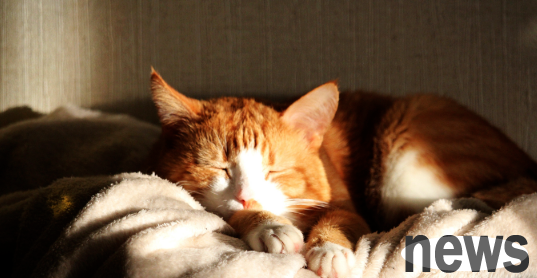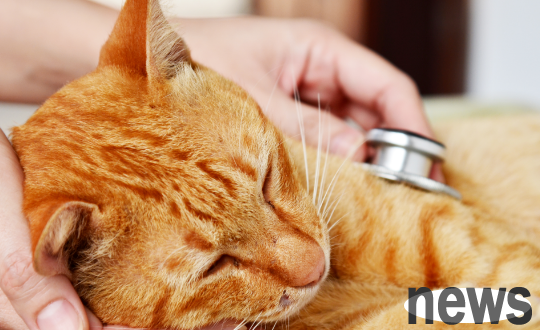Cats are indispensable companions in the lives of many shovelers, and their cuteness and gentleness are often intoxicating. Just like humans, cats can also face health problems, one of which is lower urinary tract disease. So, what is a cat's lo...
Cats are indispensable companions in the lives of many shovelers, and their cuteness and gentleness are often intoxicating. Just like humans, cats can also face health problems, one of which is lower urinary tract disease. So, what is a cat's lower urinary tract disease and what is going on?

Lower Urinary Tract Disease in Cats (FLUTD) is a common disease, especially in middle-aged and elderly cats. It is actually a collective name for a group of diseases, including urinary tract infections, stones, urethral obstruction and cystitis. These issues usually involve the cat's urinary system, especially the urethra. The urethra is a pipe connecting the bladder and the external environment, used to urinate. When this channel is blocked or infected, cats will experience symptoms of lower urinary tract disease.
When cats suffer from lower urinary tract disease, they usually experience multiple symptoms, which often attract the attention of pet parents. The following are some common symptoms of lower urinary tract diseases in cats:
01
Frequent urination: Cats frequently enter and exit the cat litter box, but can only discharge a small amount of urine at a time.
02
Hema: The urine may contain blood, which is pink or red.
03
Irregular urination: Cats may urinate outside the litter box.
04
Over licking the genital area.
05
Present urination: Cats may make painful sounds when they urinate.
06
Usual: The cat squats in the litter box for a long time, but almost no urine is excreted.
These symptoms are usually typical manifestations of lower urinary tract diseases in cats. Once these symptoms are noticed, pet parents should closely observe the pet and seek medical treatment in time.
So, what exactly causes the cat's lower urinary tract problems? The causes of lower urinary tract diseases in cats vary, mainly include the following aspects:
01
The causes of cats' urinary tract stones are too little water intake, cats still like to hold their urine, or the large amount of magnesium in the foods fed, resulting in the formation of stones or crystals in the bladder or urethra. The most common type of stone is struvite (magnesium ammonium phosphate). Although some types of stones can be dissolved through a special diet, most of the time it requires surgical removal. In addition to stones, urinary tract infection is also a common cause of the disease. Urinary tract infections in cats are mostly caused by bacteria, but in healthy young cats, bacterial infections are relatively rare because their urine is acidic and concentrations that are anti-infective. Therefore, when an infection occurs, the veterinarian may further investigate other issues that may increase the risk of infection, because kidney disease and diabetes can change the nature of urine and increase the risk of infection.
03
In cats' lower urinary tract diseases, urethral obstruction is one of the most serious problems. When a cat squats in the litter box for a long time without urinating at all, even with painful screams when urinating, this usually indicates the occurrence of urethral obstruction.
Urethral obstruction may be caused by blocking the urethra by urethral stones or urethral emboli (the latter is formed by substances such as minerals, cells and mucinoid proteins). Cats with urethral obstruction must seek medical attention immediately.
In addition to the above reasons, idiopathic cystitis in cats is also a common lower urinary tract disease.

Precautions:
01
Provides adequate water source: Ensure cats have access to fresh water at any time, which helps dilute urine and reduces the risk of stones.
02
Balanced Diet: Choose appropriate cat food to ensure that the cat's urine pH is within the normal range and reduce the formation of stones.
If a cat has been diagnosed with urinary tract problems, it can be promoted to drink more water under the guidance of a veterinarian to help discharge crystals and purify the urinary tract.
03
Pay attention to hygiene: keep the cat litter box clean and change the cat litter frequently, which can reduce the chance of bacterial infection.
04
Regular visits: Take your cat to the veterinarian for a physical examination regularly to ensure that the disease can be diagnosed and treated early.
Nursing Guide:
01
Pay attention to behavior changes:
Observe whether the cat has abnormal behaviors such as frequent urination, attempts to urinate but failed, and licking the urethra. This may be a symptom of lower urinary tract disease.
02
Seek medical treatment in an emergency:
If a cat experiences urethra blockage, this is an emergency and requires immediate medical treatment to avoid serious complications.
03
Follow veterinary advice:
If lower urinary tract disease is diagnosed, make sure to follow veterinary treatment recommendations, including medication, replacement feeding, etc.
04
Provides a quiet environment:
During treatment, it provides a quiet environment for cats to relieve their stress and helps heal.